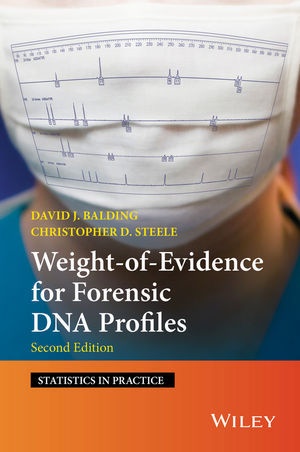Read more
DNA evidence is widely used in the modern justice system. Statistical methodology plays a key role in ensuring that this evidence is collected, interpreted, analysed and presented correctly. This book is a guide to assessing DNA evidence and presenting that evidence in a courtroom setting. It offers practical guidance to forensic scientists with little dependence on mathematical ability, and provides the scientist with the understanding they require to apply the methods in their work. Since the publication of the first edition of this book in 2005 there have been many incremental changes, and one dramatic change which is the emergence of low template DNA (LTDNA) profiles. This second edition is edited and expanded to cover the basics of LTDNA technology. The author s own open-source R code likeLTD is described and used for worked examples in the book. Commercial and free software are also covered.
List of contents
Preface to the 2nd edition xvi
Preface to the 1st edition xvii
1 Introduction 1
1.1 Weight-of-evidence theory 1
1.2 About the book 3
1.3 DNA profiling technology 4
1.4 What you need to know already 5
1.5 Other resources 6
2 Crime on an island 9
2.1 Warm-up examples 10
2.1.1 People v. Collins (California, 1968) 10
2.1.2 Disease testing: Positive Predictive Value (PPV) 10
2.1.3 Coloured taxis 12
2.2 Rare trait identification evidence 14
2.2.1 The island" problem 14
2.2.2 A first lesson from the island problem 15
2.3 Making the island problem more realistic 17
2.3.1 The effect of uncertainty about p 17
2.3.2 Uncertainty about N 19
2.3.3 The effect of possible typing errors 19
2.3.4 The effect of searches 20
2.3.5 The effect of other evidence 22
2.3.6 The effects of relatives and population subdivision 23
2.4 Weight-of-evidence exercises 24
3 Assessing evidence using likelihoods 27
3.1 Likelihoods and their ratios 28
3.2 The weight-of-evidence formula 29
3.2.1 Application to the island problem 31
3.3 General application of the formula 32
3.3.1 Several items of evidence 32
3.3.2 The role of the expert witness 34
3.4 Consequences for DNA evidence 35
3.4.1 Many possible culprits 35
3.4.2 Incorporating the non-DNA evidence 35
3.4.3 Relatives 38
3.4.4 Laboratory and handling errors 39
3.4.5 Database searches 40
3.5 Derivation of the weight-of-evidence formula y 42
3.5.1 Bayes Theorem 42
3.5.2 Uncertainty about p and N 43
3.5.3 Grouping the alternative possible culprits 44
3.5.4 Typing errors 45
3.6 Further weight-of-evidence exercises 46
4 Profiling technologies 49
4.1 STR typing 50
4.1.1 Anomalies 53
4.1.2 Contamination 56
4.1.3 Low-template DNA (LTDNA) profiling 56
4.2 mtDNA typing 58
4.3 Y-chromosome markers 59
4.4 X-chromosome markers i 59
4.5 SNP profiles i 60
4.6 Sequencing i 62
4.7 Methylation i 62
4.8 RNA i 63
4.9 Fingerprints i 63
5 Some population genetics for DNA evidence 65
5.1 A brief overview 65
5.1.1 Drift 65
5.1.2 Mutation 68
5.1.3 Migration 69
5.1.4 Selection 70
5.2 FST 71
5.2.1 Population genotype probabilities 73
5.3 A statistical model and sampling formula 74
5.3.1 Diallelic loci 74
5.3.2 Multi-allelic loci 79
5.4 Hardy-Weinberg equilibrium 80
5.4.1 Testing for deviations from HWE i 81
5.4.2 Interpretation of test results 86
5.5 Linkage equilibrium 86
5.6 Coancestry i 88
5.7 Likelihood-based estimation of FST i 90
5.8 Population genetics exercises 92
6 Inferences of identity 95
6.1 Choosing the hypotheses 95
6.1.1 Post-data equivalence of hypotheses 97
6.2 Calculating LRs 99
6.2.1 The match probability 99
6.2.2 Single locus 100
6.2.3 Multiple loci: the product rule" 103
6.2.4 Relatives of Q 105
6.2.5 Confidence limits i 107
6.2.6 Other profiled individuals 108
6.3 Application to STR profiles 109
6.3.1 Values for the pj 109
6.3.2 The value of FST 111
6.3.3 Choice of population 112
6.3.4 Errors
About the author
David J. Balding, University of Melbourne, Australia; and University College London, UK.
Christopher D. Steele, University College London, UK.
Summary
DNA evidence is widely used in the modern justice system. Statistical methodology plays a key role in ensuring that this evidence is collected, interpreted, analysed and presented correctly. This book is a guide to assessing DNA evidence and presenting that evidence in a courtroom setting.

